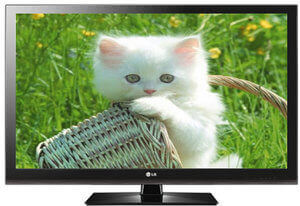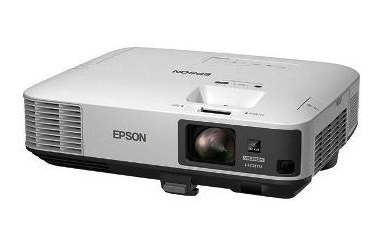An output device is a piece of computer hardware that receives data from a computer and then translates that data into another form. That form may be audio, visual, textual, or hard copy such as a printed document.
The key distinction between an input device and an output device is that an input device sends data to the computer, whereas an output device receives data from the computer.
Some of the popular output devices are:
1. Monitor
2. Printer
3. Headphones
4. Computer Speakers
5. Projector
6. GPS
7. Sound Card
8. Video card
Monitor
The monitor is the display unit or screen of the computer. It is the main output device that displays the processed data or information as text, images, audio or video.

Printer
A printer produces hard copies of the processed data. It enables the user, to print images, text or any other information onto the paper.
Function: The function of a printer is to create a copy of whatever is sent from the computer to the printer. Printers take electronic data sent from a computer and generate a hard copy.

Headphones
Headphones are a hardware device that can be plugged into a computer, laptop, smartphone, mp3 player or other device to privately listen to audio without disturbing anyone in the vicinity. They are plug-and-play devices and do not require any sort of installation before use.
Headphones are also known as earphones, or depending on the style, earbuds.
Computer Speakers
Computer speakers are hardware devices that transform the signal from the computer's sound card into audio. Speakers create sound using internal amplifiers that vibrate at different frequencies according to data from the computer. This produces sound.
Projector
A projector is an output device that enables the user to project the output onto a large surface such as a big screen or wall. It can be connected to a computer and similar devices to project their output onto a screen. It uses light and lenses to produce magnified texts, images, and videos. So, it is an ideal output device to give presentations or to teach a large number of people.
Modern projects (digital projectors) come with multiple input sources such as HDMI ports for newer equipment and VGA ports that support older devices. Some projectors are designed to support Wi-Fi and Bluetooth as well. They can be fixed onto the ceiling, placed on a stand, and more and are frequently used for classroom teaching, giving presentations, home cinemas, etc.

GPS(Global Positioning System)
GPS is a radio-based navigation system that’s composed of a sender computer and a receiver. The sender broadcasts signals to 24 satellites that ping to the sender the exact location of the sender computer in the form of latitude and longitude coordinates. The satellites use microwave signals to “talk” to the GPS, giving information on location, vehicle speed, and a number of other pieces of data.
Sound Card
The sound card controls the output of sound signals, enabling devices like speakers and headphones to work. The sound card is known as an expansion card, which means it can be added to the motherboard. Although a sound card is not essential to a computer's basic functionality, you need one if you wish to play games, watch movies, listen to music, and use audio and video conferencing.
Video Card
As with the sound card, the video card is an expansion card that slots into the motherboard. The video card processes images and video, enabling visuals to be seen on a display. Most computers have basic video and graphics capabilities built into the computer's motherboard, but for faster, more detailed graphics, a video card is required.


